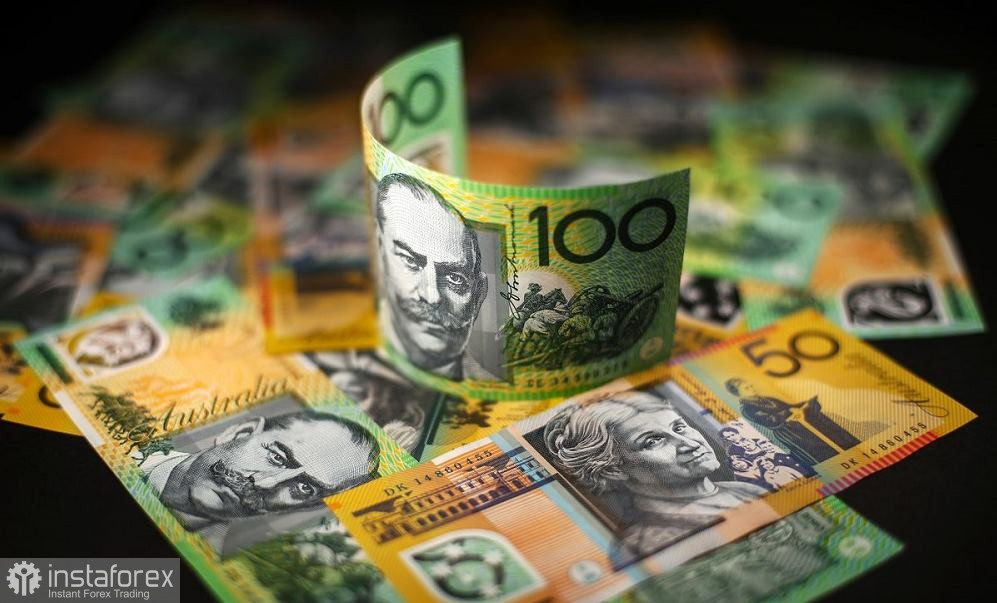The AUD/USD pair updated its 4-month price low last Friday, hitting 0.6567. The bears managed to end the trading week within the 65th figure, despite the general weakening of the U.S. dollar. At the beginning of the current trading week, the buyers took the initiative but their achievements remain relatively modest. On Monday, the pair sharply surged to 0.6720, but by the end of the trading day it retreated to the 66th figure, where it drifted.
The Aussie seems to be the outsider on the backdrop of the other major currency pairs. For instance, the pound gained almost 300 points against the greenback, and the yen gained 400 points. The Australian dollar, in its turn, could not take advantage of the situation to the full extent: the buyers of AUD/USD are wary of the upward price surges and take profit at the first opportunity (thus canceling the upward momentum). This skepticism towards the Aussie seems an echo to the March RBA meeting, the outcome of which was not in favor of the Australian dollar.
The RBA is getting ready to draw a line
Reacting to the outcome of the Reserve Bank of Australia's latest meeting, the AUD/USD pair plummeted almost 200 pips despite hawkish decisions by the central bank. The regulator increased the interest rate by 25 points (i.e., to 3.60%) and simultaneously announced that the central bank will discuss further tightening of monetary policy.

However, the formal results did not impress traders, while the rhetoric of the accompanying statement disappointed AUD/USD buyers. The RBA significantly softened the wording of the final communique. For example, the text of the February statement was very straightforward. The Central Bank then indicated that in the coming months, the regulator will need to further increase the interest rate "to ensure the return of inflation to the target level." While the March text of the accompanying statement looks completely different. In particular, the central bank refused to talk about future interest rate hikes and instead applied a more vague wording, noting only the need for further tightening of monetary policy. Such a verbal signal was interpreted by the market unambiguously—as a softening of the RBA's rhetoric.
In addition, the Reserve Bank announced another important phrase—that inflation in Australia has reached its peak. Recall that the consumer price index in January fell sharply to 7.4%, with an estimate decline at 8.1%. At the same time, the RBA drew attention to the slowing growth of the Australian economy: according to the latest data, the volume of Australian GDP in Q4 2022 increased by only 0.5% against the forecast growth of 0.8%.
In other words, the tone of the RBA's rhetoric was clearly "terminal." According to a number of currency strategists (in particular, Societe Generale), the Reserve Bank will announce a pause in rate hikes at the next (April) meeting. The Australian jobs report, which will be published Thursday, March 16, may play a certain role in this.
Australian Jobs Report
According to preliminary forecasts, the unemployment rate in Australia in February will decrease to 3.6% after a slight increase in January to 3.7%. The employment growth rate should enter positive territory (after two months of being below zero). According to forecasts, almost 50,000 jobs were created in February.
The Australian consumer inflation estimates (a good indicator of current household inflation sentiment) is also expected on Thursday. According to forecasts, this indicator will again demonstrate a downward trend, reaching 4.9% (the lowest value since March last year).
Conclusions
Despite the upward corrective pullback, the downward trend for the AUD/USD pair is still in force. If the above macroeconomic reports come out in the "red zone," the Aussie will come under additional pressure, as the likelihood of a pause from the RBA will increase again. In general, the current dynamics of AUD/USD is indicative: the Aussie could not build on the success even against the background of the extremely weak positions of the greenback. All this suggests that as soon as the USD stabilizes (for example, if inflation in the United States starts to gain momentum again), the downward trend will resume, as the Aussie will not be able to pull the price up by itself.
The technical picture tells the same. The pair on the daily chart is between the middle and lower lines of the Bollinger Bands indicator, as well as below all lines of the Ichimoku indicator (including the Kumo cloud). The main target of the downward movement in the medium term is the lower line of the Bollinger Bands indicator on the D1 timeframe, which corresponds to 0.6530.





















